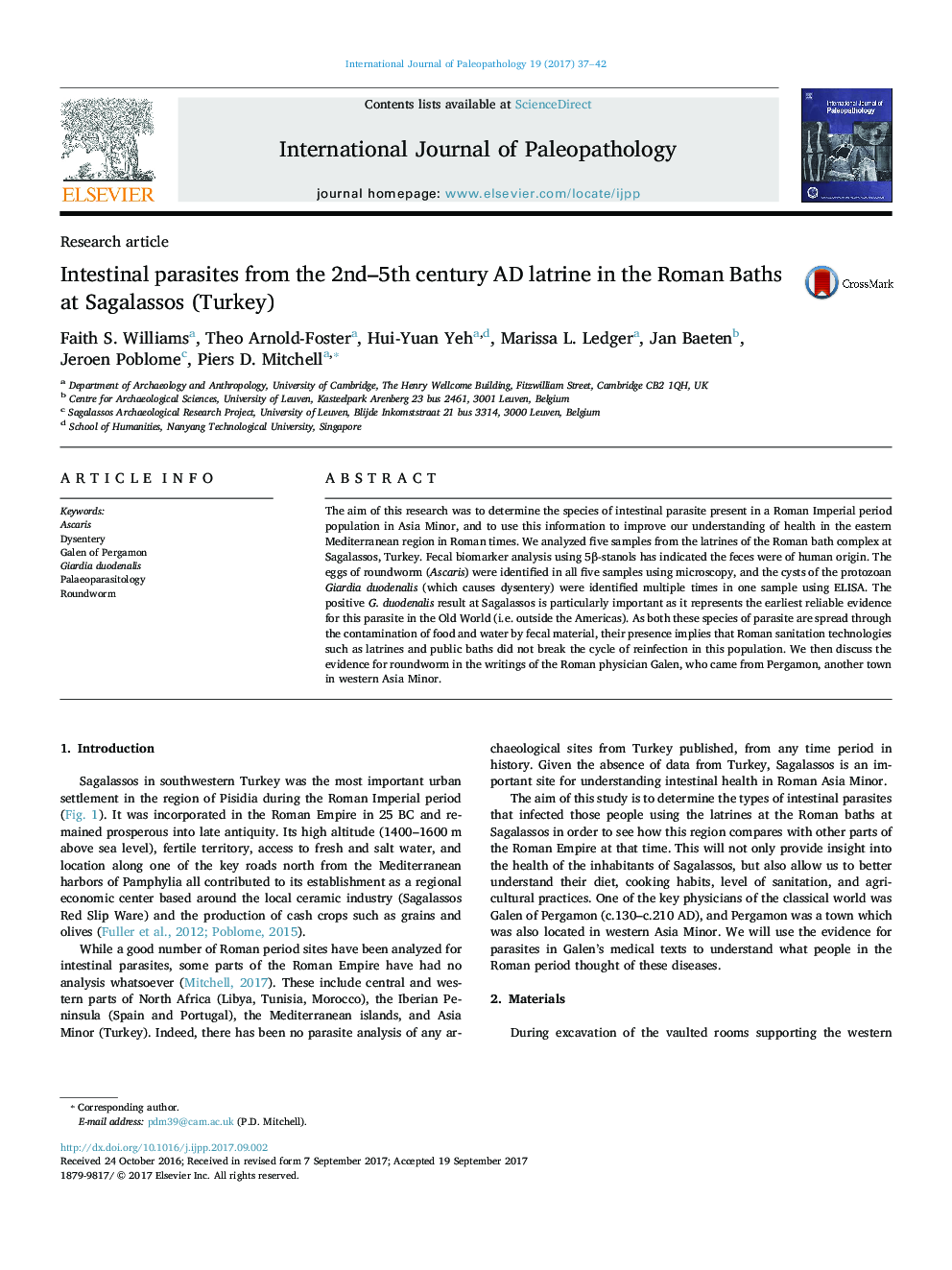| کد مقاله | کد نشریه | سال انتشار | مقاله انگلیسی | نسخه تمام متن |
|---|---|---|---|---|
| 4760552 | 1422372 | 2017 | 6 صفحه PDF | دانلود رایگان |
عنوان انگلیسی مقاله ISI
Intestinal parasites from the 2nd-5th century AD latrine in the Roman Baths at Sagalassos (Turkey)
ترجمه فارسی عنوان
انگل روده ای از قرن دوم و پنجم میلادی در حمام روم ساگالاسوس (ترکیه)
دانلود مقاله + سفارش ترجمه
دانلود مقاله ISI انگلیسی
رایگان برای ایرانیان
کلمات کلیدی
موضوعات مرتبط
علوم زیستی و بیوفناوری
بیوشیمی، ژنتیک و زیست شناسی مولکولی
فیزیولوژی
چکیده انگلیسی
The aim of this research was to determine the species of intestinal parasite present in a Roman Imperial period population in Asia Minor, and to use this information to improve our understanding of health in the eastern Mediterranean region in Roman times. We analyzed five samples from the latrines of the Roman bath complex at Sagalassos, Turkey. Fecal biomarker analysis using 5β-stanols has indicated the feces were of human origin. The eggs of roundworm (Ascaris) were identified in all five samples using microscopy, and the cysts of the protozoan Giardia duodenalis (which causes dysentery) were identified multiple times in one sample using ELISA. The positive G. duodenalis result at Sagalassos is particularly important as it represents the earliest reliable evidence for this parasite in the Old World (i.e. outside the Americas). As both these species of parasite are spread through the contamination of food and water by fecal material, their presence implies that Roman sanitation technologies such as latrines and public baths did not break the cycle of reinfection in this population. We then discuss the evidence for roundworm in the writings of the Roman physician Galen, who came from Pergamon, another town in western Asia Minor.
ناشر
Database: Elsevier - ScienceDirect (ساینس دایرکت)
Journal: International Journal of Paleopathology - Volume 19, December 2017, Pages 37-42
Journal: International Journal of Paleopathology - Volume 19, December 2017, Pages 37-42
نویسندگان
Faith S. Williams, Theo Arnold-Foster, Hui-Yuan Yeh, Marissa L. Ledger, Jan Baeten, Jeroen Poblome, Piers D. Mitchell,
